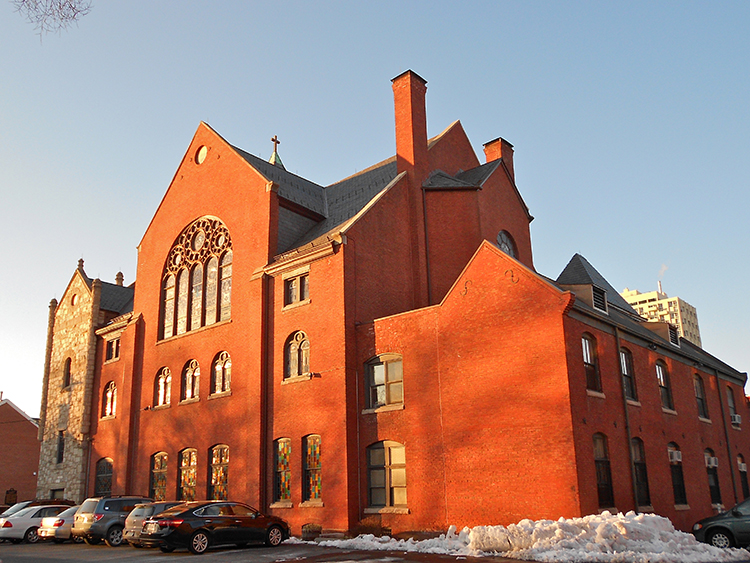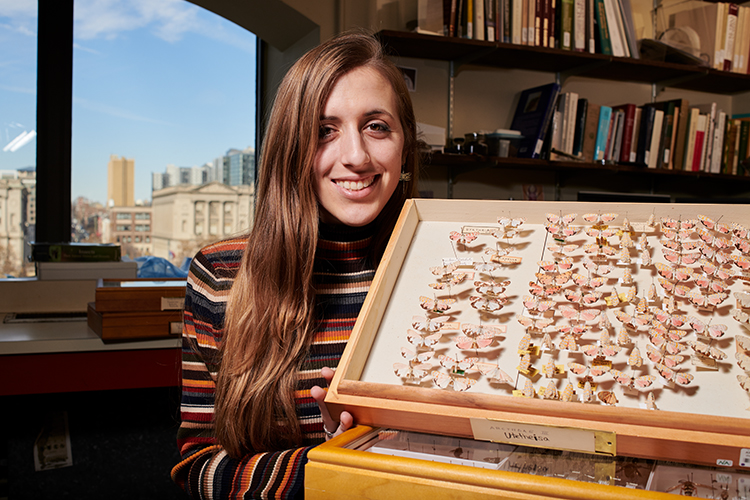Photo courtesy of Mother Bethel AME Church, Philadelphia PA
by Constance Garcia-Barrio
The trouble during prayers that Sunday in 1787 at St. George’s Methodist Church on Fourth Street in Old City could have bloomed into a fistfight.
“We had not long been upon our knees before I heard considerable scuffling and low talking,” Reverend Richard Allen (1760-1831) wrote years later. A trustee of white-led St. George’s yanked up Allen’s friend Absalom Jones (1746-1818), a fellow black congregant, and shoved him toward the steps to the balcony where the church segregated African Americans.
The move backfired.
“We [blacks] all went out of the church in a body,” Allen wrote, “ … and they were plagued with us no more.”
Allen and Jones, both of them freedmen, abolitionists and respected preachers, wasted no time. Days after the St. George’s incident, they formed the Free African Society, a benevolent group that also held nondenominational religious services. The Society provided mutual aid for “ … free Africans and their descendants.” It was almost 2,000 strong in Philadelphia by 1787.
Members paid monthly dues of “ … one shilling in silver Pennsylvania currency,” Allen wrote.
In 1793, Allen, committed to Methodism, shelled out $35—more than $800 in today’s money—of his own for land at Sixth and Lombard streets.
“I bought an old frame … formerly … a blacksmith shop … and hauled it to the lot … ” he wrote. “I employed carpenters to repair … [it] and fit it for a place of worship.”
Allen founded Mother Bethel African Methodist Episcopal Church there in July 1794. An anvil served as his pulpit. As the congregation grew, three successively larger churches were built. Today, Mother Bethel AME Church, 419 S. Sixth Street, has become a National Historic Landmark and the oldest parcel of real estate continuously owned by blacks in the United States.
In 18th-century Philadelphia, where blacks practiced different faiths, including African-based religions—refugees from the Haitian Revolution added another layer of complexity. Some African Americans may have seen Mother Bethel as a spiritual anchor and a home of activism.
The young black churches stirred pride in African Americans and nettled some whites. Jones began St. Thomas Episcopal Church in 1794.
“In the olden time … colored beaux and belles … were … unknown,” wrote John Watson in his Annals of Philadelphia. “Their aspirings and little vanities have been growing since they got those separate churches … ”
One wonders what galled Watson most: blacks’ increasing independence or their organizational savvy. In response to the 1829 Cincinnati race riot that led 1,200 blacks—more than half of the black population—to leave that city, African American leaders from seven states held the first National Negro Convention in 1830 at Mother Bethel. Allen, by then the first bishop of the AME Church, presided.
For many, Reverend Allen represented the face of black spirituality and organizing, but beside him stood the women of the church, including his wife, Sarah. They, too, became a spiritual and activist force.
Born into slavery in Virginia, Sarah Bass Allen (1764-1849) reached Philadelphia at age 8, historians say. A fetching thirtysomething widow when she met Richard Allen in 1801, she’d somehow gained her freedom. Sarah and Richard, a widower, wasted no time. Married in 1802, they had the first of six children the following year.
Sarah never learned to read or write, but records suggest she had good financial sense. “Our museum has a rent book where you can see the X Sarah made to show that she’d collected the rent for a property,” says Margaret Jerrido, 67, Mother Bethel’s archivist.
Besides running the household with the economy and peace Richard needed for his ministry, Sarah risked hiding fugitive slaves. “We don’t have written documentation, but we’re 99 percent sure that Mother Bethel was a station on the Underground Railroad,” Jerrido says.
Sarah also helped give the AME Church a tidy public presence. Once, she met a young couple at Mother Bethel who had spent much time on the road, working as itinerant preachers with scant financial support. They looked bedraggled, their clothes worn. Sarah called together a sewing circle. She and the other women sewed through the night and gave the couple several new outfits in the morning.
Thanks to an unusual decision, Sarah helped to gain a higher profile for the AME Church beyond Philadelphia. She cared for the children of Jarena Lee (1783-1864)—the first woman authorized to preach by Reverend Allen and the first black woman in the U.S. to publish an autobiography—while Lee traveled and preached.
“From Philadelphia I travelled on foot thirty miles to Downingtown and gave ten sermons … there,” she wrote in the Life and Religious Experience of Jarena Lee, describing her work in 1822. Though a pious widow of limited means, Lee stirred controversy. “The Bishop [Allen] was pleased to give me an appointment at Bethel Church [in 1823], but a spirit of opposition arose among the people against the propriety of a female preacher.”
Racial and gender bias didn’t stop Lee. “I have travelled, in four years, sixteen hundred miles and of that I walked two hundred eleven miles, and preached the gospel of God,” she writes in her book, speaking of 1824.
After the Civil War, women missionaries from Mother Bethel went south to help teach freedmen and establish new churches.
In addition, the AME Church’s Christian Recorder, the oldest existing newspaper published by black Americans in the U.S., included articles by and for women. First printed in 1852, the newspaper also helped family members separated during slavery find each other.
“Information Wanted Of John Pierson, son of Hannah Pierson,” reads a notice in the February 4, 1865 edition. “When last seen by his mother he was about 12 years of age, and resided in Alexandria, Virginia … from which place his mother was sold to New Orleans … Through the reverses of this war she [reached] … New Bedford, Massachusetts … Any information concerning him or his grandmother, Sophia Pierson, will be thankfully received.”
Such ads ran into the 1900s.
Mother Bethel’s small museum, with artifacts such as the original pews and ballot boxes used to elect church officials, trace church history. To learn more about the church, including when one can hear its soul-stirring music, visit motherbethel.org/church.php






